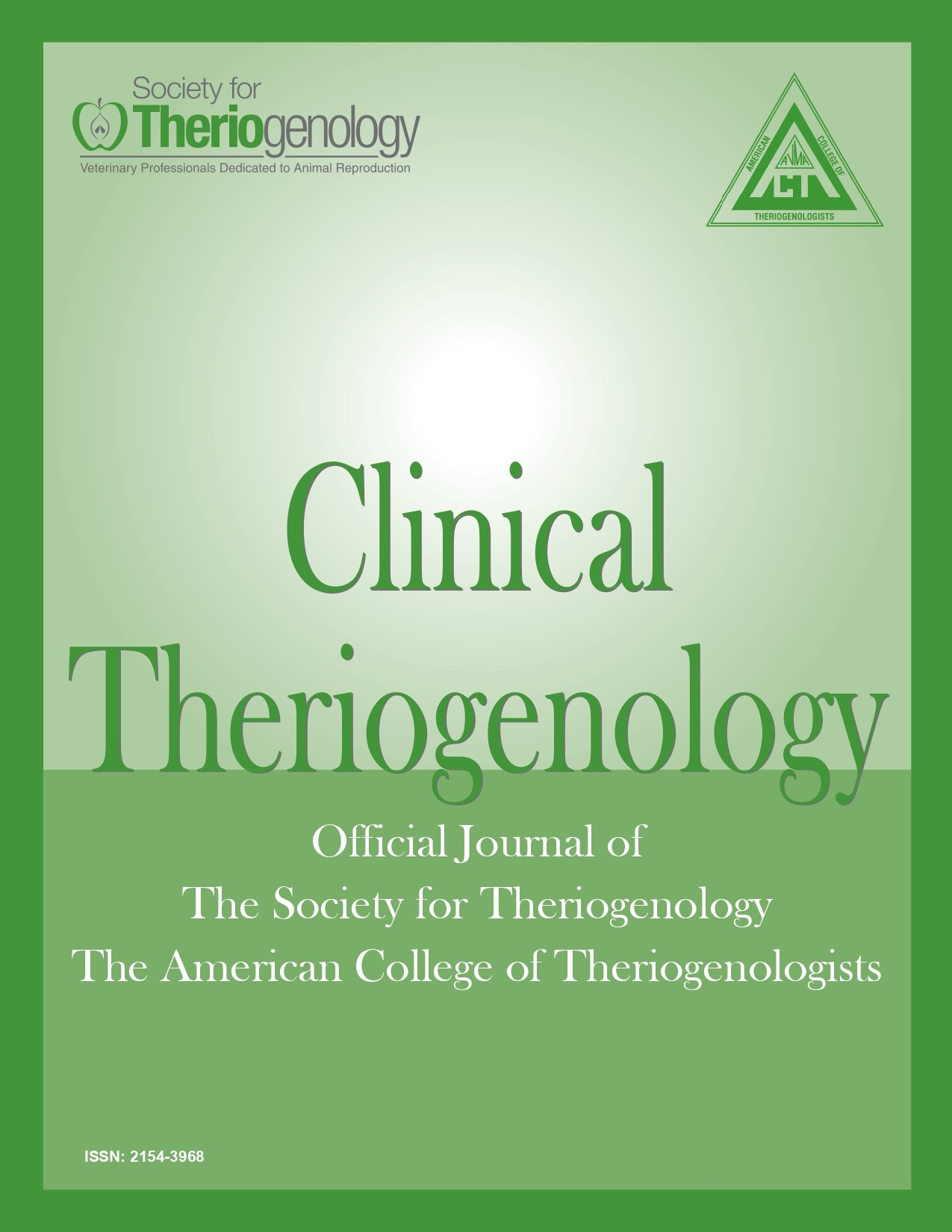Ovarian abscess caused by transvaginal oocyte aspiration in a Quarter Horse mare
Abstract
Assisted reproductive technologies, such as transvaginal oocyte aspiration (TVA), are common in the equine industry. Complications are rare, but include internal hemorrhage and ovarian abscess formation.1,2 An apparently healthy, 15 year old Quarter Horse mare was referred for transvaginal oocyte aspiration. She had a history of a previous TVA. Transrectal palpation and ultrasonography revealed a not freely movable left ovary that was firm, with no palpable ovarian fossa, and a 4.9 x 2.2 cm structure with a fluid-filled center. Her right ovary had a corpora hemorrhagica, 20 and15 mm follicles and 3 follicles that were 5 mm. She had 1.5 cc of fluid in the body of her uterus and a tight cervix. Due to history, elevated temperature (39.6oC), and findings of left ovary, an ovarian abscess was suspected, and TVA was not performed. Owners elected to remove left ovary via a laparoscopic ovariectomy. During the procedure, ovarian abscess ruptured prior to removal from abdomen, requiring placement of an abdominal drain and continued lavages with sterile saline and infusions of cefazolin over the next 24 hours. Ovary was submitted for histopathology and cultures from the abscess were submitted to clinical pathology. Immediate postoperative treatment included potassium penicillin, saccharomyces, gentamicin, and flunixin meglumine. Subsequently, Klebsiella pneumoniae, resistant to potassium penicillin and gentamicin was cultured. Those drugs were discontinued and she was then treated with chloramphenicol. Histopathology of the ovary indicated a focal, chronic, marked, suppurative oophoritis with fibrosis (abscess). This mare required substantial, continued, postoperative medical management due to several complications but did eventually recover after more than 6 months in the hospital. This case highlighted a potential complication of a frequent reproductive procedure, as well as the presentation of an ovarian abscesses.
Downloads

This work is licensed under a Creative Commons Attribution-NonCommercial 4.0 International License.
Authors retain copyright of their work, with first publication rights granted to Clinical Theriogenology. Read more about copyright and licensing here.





